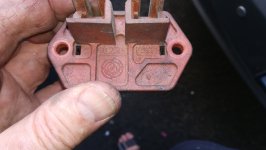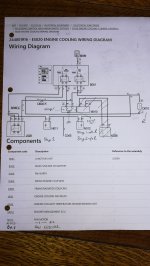Hello,
The cooling fans on our motorhome do not start, the temperature rises.
The car is a fiat ducato 230 -00 with the 2.8IdTd engine.
I have tested most things, i need some tips, below is what I have done so far.
supply the fans directly with 12V and they both start.
hot wired the cabel to the sensor in the bottom of the radiator and both fans start, one pin 1 fan and the other pin both fans.
taken out the relays and tested these, they close when supplied with 12V and conduct current without problems
let the car idle, the thermostat opens and circulates as it should (almost new)
Replaced the sensor with a new one in the hope that it would be the one, but no difference. The temperature gauge in the cabin was above normal temperature and then one fan should start as I understood it.
checked all fuses ocularly they are whole
Anyone have any further tips on what I can check?
Thanks in advance!
The cooling fans on our motorhome do not start, the temperature rises.
The car is a fiat ducato 230 -00 with the 2.8IdTd engine.
I have tested most things, i need some tips, below is what I have done so far.
supply the fans directly with 12V and they both start.
hot wired the cabel to the sensor in the bottom of the radiator and both fans start, one pin 1 fan and the other pin both fans.
taken out the relays and tested these, they close when supplied with 12V and conduct current without problems
let the car idle, the thermostat opens and circulates as it should (almost new)
Replaced the sensor with a new one in the hope that it would be the one, but no difference. The temperature gauge in the cabin was above normal temperature and then one fan should start as I understood it.
checked all fuses ocularly they are whole
Anyone have any further tips on what I can check?
Thanks in advance!






